Parallel Sessions 1.1 to 3.4
Putting 600,000 books online: the large-scale digitisation partnership between the Austrian National Library and Google (presentation available in PDF)
Max Kaiser; Jeanna Nikolov-Ramirez Gaviria. Austrian National Library, Austria
In a Public Private Partnership with Google the Austrian National Library will be digitizing its entire historical book holdings from the early 16th to the late 19th century. Within the next 6 years 600.000 public domain books of the library’s world famous historical book collection will gradually be made available online free of charge and without restrictions.
The announcement of the project "Austrian Books Online" in June 2010 triggered a broad public discussion regarding private co-financing of large-scale digitisation. A report recently published by the EC’s "Comité des Sages" emphasises the importance of public private partnerships in reaching the aim of bringing a critical mass of Europe’s cultural heritage online and mentions the Austrian National Library’s project.
In this partnership, Google is financing digitisation, full-text creation and book transportation while the Austrian National Library is bearing the costs for metadata creation, internal logistics, storage of the library’s digital copies and online accessibility. The library will receive a copy of each digitised book. Users will be able to access the digitised books via Google Book Search and via the library’s Digital Library. They will also be able to find the books in a normal Google search as well as in Europe’s cultural heritage portal Europeana.
The already finalised first project phase included establishing the complex logistics and planning of human resources and infrastructural requirements. The project group involves staff from different areas of the library who have partly been reassigned for this challenging project. Digitisation will start in spring 2011.
The talk will explain the rationale for setting up this partnership, provide an overview of its cornerstones and summarise the public debate. We will then explain the processes established for book preparation such as conservatory assessment, logistics for pulling and re-shelving huge amounts of books and necessary metadata adaptations.
The talk will outline our planning for quality assurance in a mass-digitisation workflow and discuss data ingest routines and data storage requirements. We will outline our planning for online access which in a first phase includes linking the digitised books to the library’s electronic catalogue via a persistent identifier resolver and in a second phase implementing a full-text search interface.
The talk will conclude with a summary of first Lessons Learned from this project.
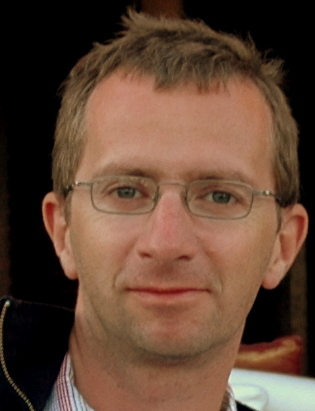 |
Max Kaiser is Head of the Research and Development Department at the Austrian National Library, Vienna. He graduated from the University of Vienna where he worked as a research associate before joining the Austrian National Library in 2000. He has many years of experience in research development in the areas of digital preservation, digitisation, and digital libraries. He has been involved in a large number of EU R&D projects in the European Commission’s FP4, FP5, FP6, FP7, eContent and eContentplus programmes. Currently he is coordinator of the EuropeanaConnect project which is building main components for Europeana. He is also member of the Management Board of “Europeana V.1.0” which is building the core of Europeana. He is Member of the Board of Directors of the Open Planets Foundation. Max Kaiser acts as programme lead for “Austrian Books Online”, the Austrian National Library’s large scale digitisation cooperation with Google, and is member of the library’s Digital Library Steering Board. He has given presentations at a number of international conferences and workshops and teaches Digital Libraries and Digital Preservation at the University of Vienna, the University Krems and the Center for Information and Communication Technology and Management in Eisenstadt.
|
Knotworking in academic libraries: two case studies from the University of Helsinki (presentation available in PDF)
Anne Laitinen; Yrjö Engeström; Heli Kaatrakoski; Heli Myllys; Juhana Rantavuori; Pälvi Kaiponen; Johanna Lahikainen; Kaisa Sinikara. University of Helsinki, Finland
Librarians in academic libraries are currently facing major changes in their work due to e.g. the internet and digitalisation of material. Also, one of their most important customers, namely researchers are increasingly using new digital channels for acquisition of information. This creates dual challenges for librarians to develop their work towards innovative work models in order to deepen their own expertise and serve their clients.
In this paper we present innovation processes and results of a development project ‘Knotworking in the Library’ from the Helsinki University Library. The project was conducted by using the method of Change Laboratory and the aim was to create new kind of partnership between libraries and research groups and a new way of working: knotworking. By knotworking we refer to a boundary crossing, collective problem-solving way of organising work, in which intensive collaborative periods vary according to the changing requirements of the current situation.
In its present state the Helsinki University Library was founded in the beginning of 2010 and started operating as an independent institute. It consists of centralised services and four campus libraries. The project was conducted in the Viikki Campus Library (2009 - 2010) and City Centre Campus Library (2010 - 2011).
The Viikki Campus Library started operating in the year 1999, when five libraries were combined. In 2005 it formed one administrative unit and was located in the same building. It serves the fields of Biological and Environmental Sciences, Agriculture and Forestry and Pharmacy and Veterinary Medicine. The City Centre Library started operating at the beginning of 2010 and combined five faculty libraries and the Undergraduate Library. However, physically the units are still separated in 11 places due to the construction phase of a new building. The City Centre Library serves social sciences and arts and humanities.
This paper reports comparative empirical results of the innovation processes in the two libraries: 1) a shared service tray of services for researchers, and 2) a knotworking model for library employees and researchers. In the full paper we first qualitatively analyse, within the expansive learning framework, how the librarians and the pilot research groups created the knotworking model. Second, we analyse the character of the innovations and learning as part of new way of organising and doing library work.
|
 
|
Anne Laitinen is a doctoral student at the University of Helsinki, Institute of Behavioural Sciences, Center for Research on Activity, Development, and Learning (CRADLE). She is a member of the Finnish Doctoral Programme in Education and Learning (FiDPEL) 2010-2013. She has worked as a member of Professor Engeström’s research group “New Forms of Work and Learning“ since 2008. She worked in the “Knotworking in the Library project” first within the Viikki Campus Library Change Laboratory pilot in 2008 and the City Center Campus Change Laboratory project in 2010-2011. Her own research focuses on the emergence of agentive action and the method of the Change Laboratory.
Heli Myllys, Licentiate of Social Sciences, has acted as library director since 1982. Under the years 1982-1991 she acted at the Statistics Finland Library, under the years1991-1999 at the Agricultural Library University of Helsinki and from 1999 to 2010 at the Viikki Science Library, University of Helsinki. She has been retired from the Spring 2010 and is contributing now as the Senior Consultant in the "Knotworking in Academic Libraries: two case studies from the University of Helsinki" research project. The consultancy is direct continuation of her deep involvement in the pilot study in Viikki during the year 2009.Her main interests today are grandchildren and gardening.
|
The handheld library. Developments at the Rector Gabriel Ferraté Library, UPC (presentation available in PDF)
Beatriz Benitez Juan; Javier Clavero Campos; Miquel Codina Vila; Andrés Pérez Gálvez. Technical University of Catalonia, Barcelona, Spain
The purpose of this paper is to highlight the mobile services developed by the Rector Gabriel Ferraté Library (BRGF) of the Technical University of Catalonia (UPC), in Barcelona, Spain.
For several years the BRGF has implemented a considerable amount of technological features that have distinguished the library because of its technological vocation, but only those regarding mobile services are listed here.
We consider that the paper could be useful for libraries investigating new technological innovations to communicate and deliver their services to users in a moment when mobile services are an emerging topic in librarianship and information science literature.
By detailing the successive steps that have defined the as yet unfinished process to construct our mobile services portfolio we intend to present a detailed picture of the mobile services and features offered by the library in the university from a case study perspective.
Main items to be discussed will include:
- The mobile web site of the BRGF including information, interactive capabilities and service provision to the users of the library
- The adapted access to UPCommons (the UPC Library Service’s institutional repositories) from handheld devices
- The mobile OPAC of the UPC Library Service
- The BRGF’s e-book readers lending service
- The mobile use of u-win (videogame services of the BRGF)
- The use of QR codes to deliver information to mobile devices
- SMS notifications
- OoohWeb! (a selection of 2.0 resources maintained by the UPC Library Service) access from mobile devices
Other topics for discussion will include:
- The library’s organization and the organizational concepts that underpin and make possible our technological (including mobile) developments
- The BRGF’s concern regarding the reduction of investment in the development of mobile services
- The criteria and the use of tools aids that guide the Library in the process of deciding the design and orientation of current and future mobile services
- How these mobile services can help to improve the image of the library as a technological reference site for users and librarians
- Some future mobile features that the BRGF is planning to offer in the near future
Ultimately, our paper aims to delineate the effectiveness of and potential to deliver library services through the preferred modes of a new generation of students and teachers.
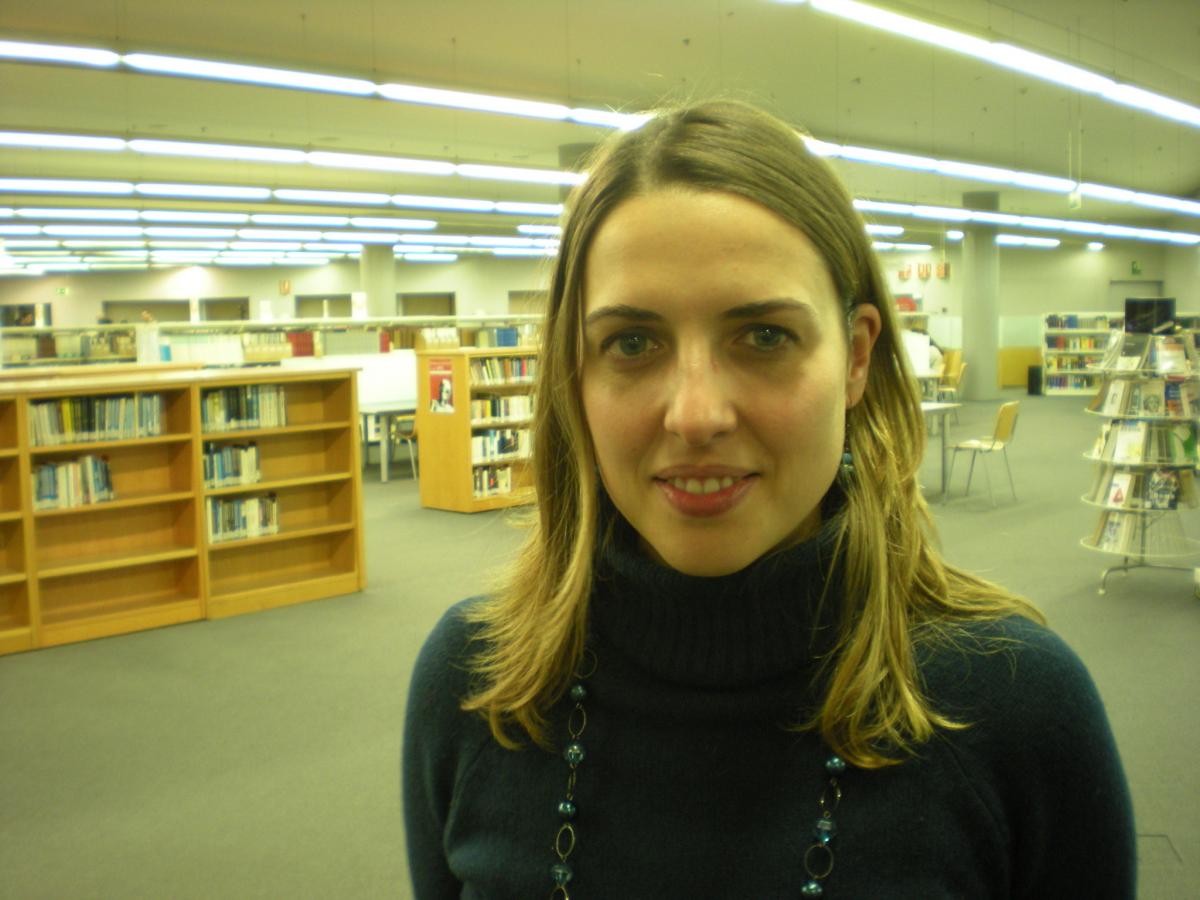 |
Beatriz Benitez is a librarian on Research Services Unit at Rector Gabriel Ferraté Library http://bibliotecnica.upc.edu/BRGF/ in the North Campus of the Technical University of Catalonia – Barcelona Tech (UPC). She received her BA in Library and Information Science from Barcelona University in 2002. Prior to joining UPC on 2010, she worked for five years at Open University of Catalonia’s Virtual Library where she was in charge of electronic resources management. Her main research interests are: end user training, bibliometric analysis, electronic libraries and collection development.
|
Paradise by the dashboard light': working with a simple PDCA cycle at Avans University of Applied Science (presentation available in PDF)
Ellen Simons. Avans University of Applied Sciences, The Netherlands
In view of all the reorganisations and budget cuts we see everywhere; I would like to share our experiences in working with a simple PDCA cycle. I work at the Learning and Innovation Centre (LIC) of the Avans University of Applied Science in the Netherlands. Avans has opened three Xplora’s (Learning Centres) in 2006 and 2007. The traditional library has changed into a learning-centre and now resides under the LIC. Since 2005 a new organizational structure and new working-arrangements with faculty staff have been set up. The LIC has 85 fte staff divided over 7 teams.
In 2009 we started with an experiment introducing a new and more effective way of reporting to our executive board. We designed a simple ‘dashboard’ on which at a glance one can see how the Learning and Innovation centre is doing on a quarterly basis from the perspective of the Balanced Score Card (financial, customer, internal and Innovative).
Commissioned by the executive board in 2009 we also developed an activity-based budget model applied to each team. Thus we set up a PDCA cycle. We adopt KPI’s, not only for the LIC as a whole but also for each team. The aim was not only to deliver information to the executive board but also for ourselves to have more objective information about our own organization. We introduced the KPI and dashboard for all our teams. Our executive board only get’s a copy of the main dashboard which is composed of the dashboard from the different teams.
We also introduced simple time schemes for our staff. With the information from these time schemes we can check if the time we planned to spend on activities in practice really was spent and also the progress being made each quarter. The PDCA-cycle we set up is not complicated and is easy to use. We are very pleased with what we have done because we now have more objective management information.
Important to mention is that we developed this tool only for improving processes and not as a control instrument directed at staff!
The Executive Board is pleased with the new way we submit the different necessary documents and the way we do our updates every quarter. Because we now have much more meaningful information about our performance we also are very content with it and because everything now is transparent, we can easily demonstrate how we invest Avans’ money and this makes the discussion with our board much easier.
 |
Ellen Simons started her career at Hogeschool West-Brabant in 1990 as a librarian. She quickly became the head of the university library. At this moment she is deputy-director of the Learning and InnovationCentre at Avans University of Applied Sciences. Ellen is vice-chairperson of the SHB, the Dutch consortium of Libraries of Universities of Applied Sciences and chair of the SHB-licensing working group. In recent years she was responsible for the strategic planning of educational innovation at Avans University, aimed at the transformation of a traditional library to a new Learning Centre. She was actively involved in the design of the three new learning centres in Breda, ’s-Hertogenbosch and Tilburg. Her primary interest is the cooperation between educational and library staff. The new Xplora learning centre presents itself as partner of the schools. As part of this new position a large training program has been developed for the former library staff.
|
Mass-digitization at the Complutense University Library. Access and preservation of its bibliographic heritage (presentation available in PDF)
José Antonio Magán; Manuela Palafox; Eugenio Tardón. Universidad Complutense de Madrid, Spain
IIn the mid-1990’s, the Complutense Library applied the growing body of new technologies to launch, in partnership with the Foundation for the Health Sciences and GlaxoSmithKline Laboratories, a pioneering project: the digitization of a biomedicine valuable collection. The project resulted in the Dioscórides Digital Library. Nevertheless, by 2006, results were rather limited and the digitization rate was very slow. Currently, Dioscórides Digital Library offers free access to 3,000 books from the 14th to the 18th centuries and approximately 50,000 engravings.
In September 2006 the Complutense University of Madrid and Google signed a partnership agreement intended to large-scale digitization of our collections in the public domain. The Complutense University Library participates in this mass-digitization project aiming at:
- Improving the discovery of Complutense bibliographic heritage and enlarging the number of potential readers.
- Carrying out its public service mission.
- Preserving and protecting the original books.
- Enhancing students and faculty research.
By early 2011 the Complutense Library had digitized roughly 120,000 out-of-copyright books from 16th to the 19th centuries. All these materials are easily accessible from the Complutense Library Catalogue, Google Books and HathiTrust Digital Library. The Complutense University of Madrid joined the HathiTrust Digital Library in December 2010, thus allowing its books that were digitized by Google to be stored in the HathiTrust servers at the University of Michigan and Indiana University. HathiTrust Digital Library is both a digital preservation repository and an access platform. It provides long-term preservation and access services for public domain and in-copyright content from a variety of sources, including Google, the Internet Archive, Microsoft, and in-house partner institution initiatives. At the present, HathiTrust has 54 partners that ensure the reliability of the digital library by using community standards and best practices. HathiTrust experiments with large scale search, text mining or computational linguistics and other specialized services. In early 2011, HathiTrust will reach 2 million public domain volumes and the collection will pass 8 million volumes.
Additionally, and complementing the actions mentioned above, the digital content of Complutense University Library will be aggregated to Europeana over 2011.
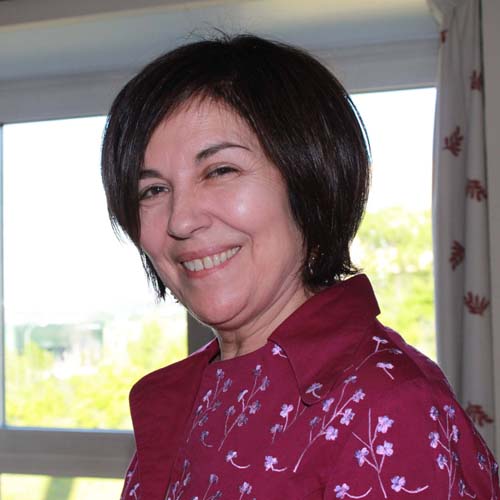
|
Manuela Palafox has been a professional librarian for over twenty years since graduating in Latin American Anthropology from the Universidad Complutense de Madrid. She is Head of Digitization and Publishing Services and she is the coordinator of the partnership digitization agreement between Complutense Library and Google Books since 2006, the coordinator of the partnership with HathiTrust Digital Repository and she is working in the Europeana Libraries project. Amongst other positions, she has taken on tasks set by the Sub-director of Information Services part of the BUC IT Service and Library Systems and the Director of the Historic Archives Automation Project at the Universidad de Santo Tomás in Manila (Philippines) for the Spanish Agency of International Cooperation. She has been a member of the Spanish Association Governing Board (SEDIC) and author of a number of publications and conferences.
|
Getting to know the library users’ needs - Experimental ways to user centered library innovation (presentation available in PDF)
Thomas Vibjerg Hansen (1); Karen Harbo (2). Aalborg University Library, Denmark (1); ASB Library, Aarhus School of Business and Social Sciences, Denmark (2)
”Meeting the User” is a programme committee under the Danish Electronic Research Library. As a development group on a national level we see our role as facilitating an innovation culture within research and education libraries focusing on our users´ needs and how we meet them.
In 2010 the committee together with a consultancy arranged a travelling workshop in four cities. The workshop introduced practical ways based on anthropological methods for library staff getting to know their users’ demand for service. The travelling workshop was a part of a larger project called “The User Caravan” which also included a national thematic day, a blog and the publication of a method guide.
There is an ongoing demand for becoming better at what libraries are good at as research and education libraries. One strategy is to be more aware of the users’ demands for service. On the one hand we have libraries which give access to a lot of information, offer courses in information literacy and strive to be a part of the learning environment. On the other hand we are not always certain of the needs of our users.
If libraries want to develop towards supporting their users’ needs they must innovate services, facilities and courses by building upon what you could call “user logic” and not on classical “library logic”. User’s logic is that which is meaningful for the user instead of what is traditionally meaningful for a library. Finding out what the users’ needs are requires methods to study the users. To find the shortest distance from knowledge via idea to action we looked for methods that can be carried out by librarians or library information specialists.
The presentation describes how 110 librarians and information specialists in 4 cities and in 4 days acquired such methods through a workshop composed as a guided tour to the land of library users. The goal of the presentation is to give other libraries inspiration to ideas, concepts and concrete tools to study user behavior and thereby become more aware of the user’s demand for service.
The presentation will contain
- Description of the above mentioned methods.
- Valuable experiences from the workshop.
- Presentation of concept and concrete tools.
- Discussion of the concept of user logic and library services.
- Discussion of 7 principles for human centered innovation in relation to libraries.
- Presentation of studies carried out by librarians.
- Discussion of further perspectives.
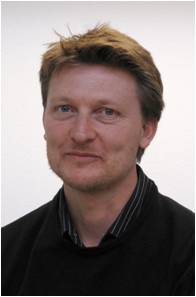 |
Thomas Vibjerg Hansen is development consultant and functional manager for student support at Aalborg University Library, Denmark. Since he started at the library in 2002 he has run courses in information literacy for students at Aalborg University, worked with librarian staff development in teaching, how the library and the librarian can support the student’ learning process and how the library’s teaching can relate to the studies’ curriculum and the problem based learning at Aalborg University.
With his background in communication and teaching studies from Aalborg University he has been a part of a team who has developed two online programs inspired by Carol C. Kuhlthau’s understanding of the information search process and the role of the librarian, which in different ways support the development of information literacy. SWIM and FLOW (a prototype).
Thomas Vibjerg Hansen is a member of Denmark’s Electronic Research Library’s program area “Meeting the User”.
|
The mobile web in university libraries: mobilize your library from 0 euro (presentation available in PDF)
Marta Abarca; David Pons; Francisco Rubio; Raquel Valles. Polytechnic University of Valencia, Spain
The W3C defines the mobile web as a web in which users can access to information from anywhere, regardless of the type of device used. Currently, it has experienced a great growth in the number of mobile devices accessing the web. This is due to many factors such as technological improvements of these devices, faster data transmission, low costs of connection, etc.
These new devices present several advantages but also some difficulties. Different tools have been created for the mobile web that offer various features such as adaptability of web sites, use of QR codes (Quick Response), sms, geolocation tools, augmented reality, RFID technology, etc.
Libraries must face a new challenge imposed by these technological advances. We should not believe that this situation is a threat or a new workload, but an opportunity to adapt the library to the new demands and needs of its users. Therefore, some services currently offered by the library will have to adapt. For example, the creation of a mobile site or a MOPAC (mobile OPAC). Libraries can now even offer new services such as the use of QR codes embedded in the catalog with bibliographical or shelf information, virtual reference through the mobile chat, libraries geolocation, etc.
In this paper, some basic aspects of mobile web are explained. Later, a description of the different tools is shown. The different options to take into account are offered, for instance, the costs of each one. Also, their applications in libraries are listed, as well as the implementation process of many of them. The aim is that each library could select the best tool according to their functions and its budget. Finally, the experience in the Polytechnics University of Valencia is shown.
The ultimate goal pursued by this paper is to encourage the creation or adaptation of services offered in libraries. Since many times these tools are free, a lot of things can be done with some basic computer skills and a small staff. To sum up, it could be said that there are low-cost tools that offer high returns to the user.
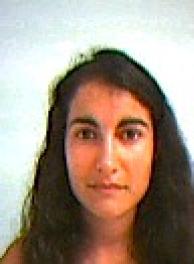 |
Raquel Valles
Degree in History at the University of Valencia
Degree in Documentation Science at the Open University of Catalonia (UOC)
Masters in Information Society and Communication at the Open University of Catalonia (UOC)
She is a librarian for the Polytechnics University of Valencia.
|
EFQM in academic libraries: the application of an international model of administration at the University of Cyprus Library (presentation available in PDF)
Stefanos Stavridis; Filippos Tsimpoglou. University of Cyprus Library, Cyprus
In December 2009 the University of Cyprus Library became the first library in Greece and Cyprus to achieve the EFQM Recognized for Excellence (R4E) distinction, awarded by the European Foundation for Quality Management. The involvement of the UCy Library with this program resulted in a clear improvement of its administrative functions.
EFQM is a non-profit organization aiming to assist organizations in implementing their strategic goals and improving their results. Among the services it offers is evaluation of the organization based on the non-prescriptive EFQM Model of Excellence . The Model consists of 9 criteria that encompass all aspects of an organization, being divided into enablers (leadership, policy & strategy, people, partnerships & resources, processes) and results (customer, people, society, key performance). R4E is the second of three levels of EFQM awards and covers all 9 criteria of the model.
The UCy Library was the first administrative branch of the organization to seek EFQM R4E. It started preparing in Fall 2008, seeking to achieve this second level of distinction within 13 months. Following the site visit in November 2009, the UCy Library was awarded EFQM Recognized for Excellence with 3 stars.
The main benefits for the Library from EFQM R4E were:
- The identification of areas of improvement, both during the preparation period and later by the official Feedback Report received, which resulted in a series of actions taken in order to improve administration.
- Assessment of the entirety of the Library’s activities and operations, taking into account all stakeholders and all resources.
- Gathering all Library staff around a common goal. The mobilization and commitment of the personnel towards the implementation of the project surpassed all expectations to the point that the course to R4E proved to be a model of collaboration not only for the Library, but for all UCy administrative services as well.
All things considered, the experience of the UCy Library with the program EFQM Recognized for Excellence was of fundamental importance, both because it helped the Library put on course processes that will improve its administration, and because it helped the Library shape a very concrete perception of the need and methodology of self-evaluation.
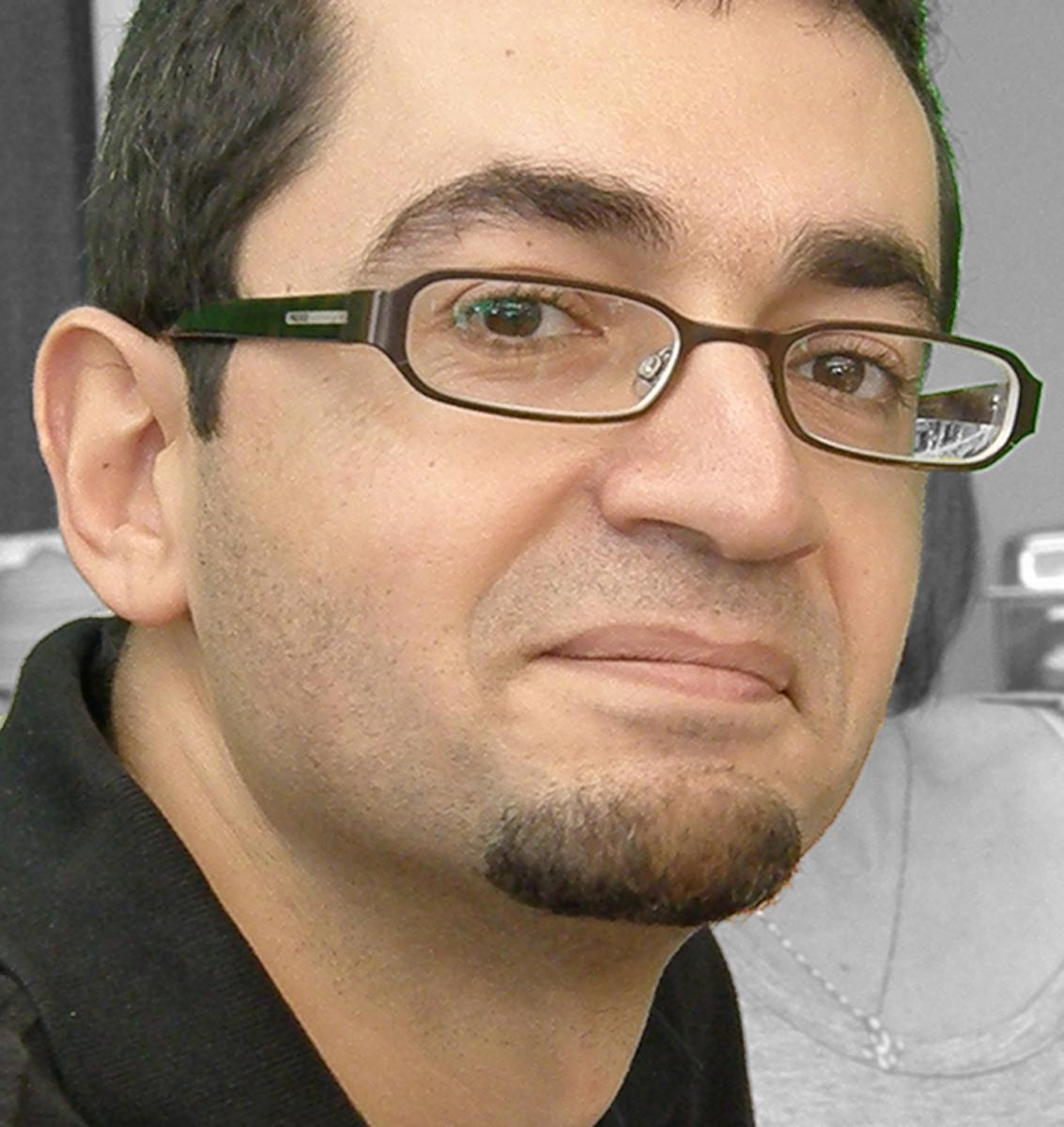 |
Stefanos Stavridis is Head of Planning & Development at the University of Cyprus Library, his responsibilities including Quality Management and Human Resources. He is a holder of a BA in Italian Studies (Brown University, 1995) and a Master’s in Library and Information Science (University of Texas at Austin, 1997).
|
Increasing access to special collections (presentation available in PDF)
Ricky Erway. OCLC, United States of America
This presentation extracts the essence of many related efforts to help libraries, archives, and museums increase access to their special collections. The Shifting Gears essay (which was presented to the LIBER conference in 2008) will be used as the launching point. Shifting Gears argued for scaling up the digitization of special collections by thinking in terms of access, instead of preservation (when we are preserving the originals). Since that game-changing essay, additional work has furthered that notion:
"Good Terms” offers guidance for improving mass digitization partnerships with private sector entities.
"Well-intentioned Practice” takes a step forward in suggesting that providing access and managing risk is a more appropriate role for libraries than being overly-conservative in protecting copyright.
"Rapid Capture" looks at the moment of actual digitization of non-book formats and highlights approaches that attempt to do so at scale.
"Capture and Release” argues for allowing, if not encouraging, cameras in the Reading Rooms.
"Scan and Deliver" investigates policy issues related to patron-initiated digitization of materials in special collections.
"Single Search" summarizes the experiences at several different types of institutions in presenting a single point of access to all of an institution's collections, bridging the silos of metadata about special collections.
Pithy guidance from these and other related efforts will be shared, including outcomes from a October symposium in Oxford, "Moving the Past into the Future: Special Collections in a Digital Age." In an era of increasing expectations and decreasing budgets, finding ways to streamline some of our processes is the best way to enable us to do more with less.
The presentation will also point to areas in need of further attention, such as making intelligent choices in
- when to collaborate – not just with each other and with private partners, but also with scholars
- deciding when we digitize en masse in a basic manner versus when it makes sense to select and curate
- how to reduce the amount of effort we put into our metadata without negatively impacting discovery.
The summary will suggest possible next steps in the European context.
 |
Ricky Erway is Senior Program Officer in OCLC Research. She works on topics related to digitization (rights issues, public/private partnerships, mass digitization, and increasing the scale of digitization of special collections). She is also very involved in the Research Information Management program, guiding working groups as they investigate how academic libraries can better serve their institutions' research missions. Ricky was key in conceiving and carrying out the library, archives, and museum collaboration workshops and the forums that followed. Ricky's wide-ranging expertise is often tapped for invited presentations at a variety of professional conferences and workshops.
Prior to the combination of RLG and OCLC in July of 2006, Ricky was Manager of Digital Resources at RLG, responsible for CAMIO (the Catalog of Art Museum Images Online) and RLG Cultural Materials (digitized special collections from a variety of libraries, archives, and museums) and was a key player in the development of ArchiveGrid (a service that aggregates bibliographic records and finding aids describing archival and special collections).
Before joining RLG, Ricky worked at the Library of Congress for nine years, the last five as associate coordinator of the American Memory program, aimed at significantly increasing public access to the special collections of the Library of Congress. Ricky has an MLS from the University of Wisconsin, USA.
|
How do researchers in the humanities use information resources? (presentation available in PDF)
Michael Jubb; Ellen Collins. Research Information Network, United Kingdom
Discovering, analysing, managing, creating, refining and disseminating information of various kinds are at the heart of the research process. How researchers undertake these tasks has changed fundamentally in the past decade. There are also profound differences, as well as some similarities, between the cultures and behaviours of researchers working in different disciplines and institutional contexts.
Various studies have been conducted on specific aspects of researchers’ attitudes and behaviour in seeking and using information resources and services. But we lack a detailed understanding of how researchers create, use and manage information resources as an integral part of the research process and of how behaviours are changing.
To address this gap, the RIN has commissioned a series of in-depth case studies of researchers in different disciplines. The first set, covering the life sciences, was published in 2009. This presentation will report on the second in the series, on researchers in a range of areas in the humanities. It will present findings on issues including
- attitudes and practices in managing and sharing data;
-
- the extent of the use of e-research techniques or other web-based communication and collaboration technologies;
-
- varying patterns of information use between researchers at different career stages and at different points within the hierarchy of a research team;
-
- differing degrees of confidence and competence in using new technologies and services;
-
- attitudes and practices in using social media; and
-
- the extent of the continuing demand for print.
In addressing such issues, we analyse the differences within the humanities, as well as between them and other subject areas, including the physical and the life sciences.
The presentation will also address the issues of value and impact, by looking at the extent to which researchers’ use of new tools, techniques and services has enabled them to ask new kinds of research questions, as well as enhancing their efficiency in addressing more traditional ones. In that context, it will look also at the varying roles and behaviours of researchers at different career stages and at differing points within the research hierarchy.
Finally, the presentation will consider the implications of these findings for libraries and other information service providers, and how information policies, strategies and services might be improved, along with researchers’ practice in making use of relevant services.
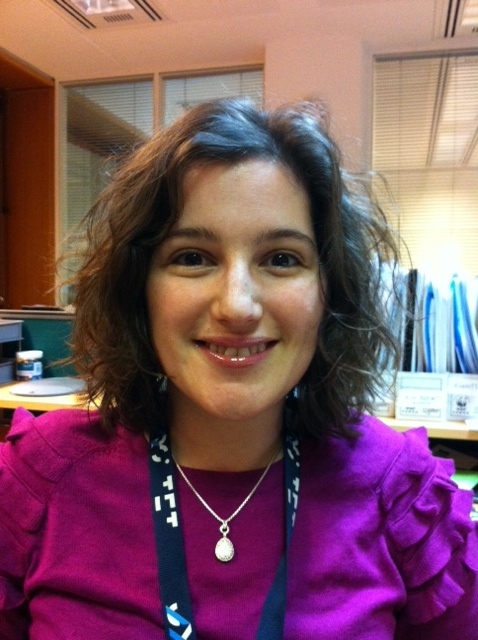 |
Ellen Collins is the Research Officer at the Research Information Network, where she has initiated, developed and managed projects on areas including researchers’ use of web 2.0, disciplinary information practices, usage of data centres and information handling in collaborative research. Prior to joining the Research Information Network, she worked for the Museums, Libraries and Archives Council, managing a major project on knowledge transfer in cultural institutions.
|
A National Library for all: the National Library of Scotland and its remote access project (presentation available in PDF)
John Coll. National Library of Scotland, United Kingdom
As highlighted in its 2010 discussion paper Thriving or surviving: the National Library of Scotland in 2030 , the National Library of Scotland (NLS) recognizes that National Libraries combine the role of being both research and public libraries. The challenge in the case of NLS is how to deliver library services in a country where geography, cost and other constraints prevent the public making direct use of resources that are already available to the research community.
As a means to achieve this and as a step in its sustained transition to a digital library, in 2010, NLS implemented a Remote Access Project that enabled all Scots to register online as customers of the library and gain immediate and free access to over 50 subscription-based electronic resources from their homes, schools and offices. These subscription-based resources included hundreds of thousands of digitized books, full-text articles from serials, global market research reports and millions of company records and thus enabled users to gain the same free access to this content as was previously available only to onsite NLS users or academic communities. This presentation explains how the project was delivered using a low-cost in-house solution, what impact this has had on usage and how far this work goes in serving the needs of the “citizen-scholar” of the 21st century.
 |
John Coll is Head of Access & Enquiries at the National Library of Scotland. His role includes responsibility for the library's reading rooms and enquiry services, the national business information service SCOTBIS and the operation of the library's new visitor centre which includes an exhibitions and treasures area, a shop and cafe. He has worked in a variety of libraries in the private and public and academic sector and holds a B.A in history and politics from University College Dublin and a post-graduate diploma from the College of Librarianship Wales. He is the country representative for the SLA Special Libraries Association and serves on the board of the SLA Europe Chapter.
|
How much is a specialised library worth? (presentation available in PDF)
Uwe Rosemann. German National Library of Science and Technology (TIB), Germany
How much is a specialised library worth?
The cost-benefit factor: A suitable tool for justifying public investment into libraries?
Today, scientific libraries have to serve a whole range of customers including those from the fields of science and the economy, collaborative partners, third-party funding agencies and political authorities. The latter group in particular require a special approach; information on the significance and purpose of a publically-funded institution has top priority here. Libraries in particular constantly have to deal with the question of their added value for the knowledge society. The responses have, up to now, been more concentrated on the qualitative rather than the quantitative aspects. However, the TIB has now taken a different path.
The TIB, as the German National Library of Science and Technology, is an important element in Germany’s research infrastructure. Annually, around 23 million euros are invested into it by the federal and state governments. Is this state investment justified? The TIB, in its capacity as a scientific library with a national focus, needs particularly good arguments to present to the funding agencies.
The evidence needed and used to justify public funding has to be identifiable, provable and quantifiable and it was obtained by the conducting of a wide-ranging online survey of TIB customers. 663 responses from companies, research institutions and public facilities gave a very clear picture; the TIB is indispensable for the research and science location of Germany. The TIB generates 3.80 euros added value which means that for every euro invested in the library, the TIB generates a 3.8 times higher gain for its customers.
The contingent valuation method was used to measure the results. This is a scientifically-recognised procedure which was developed by the Nobel Prize winners, Kenneth Arrow and Robert Solow. To put it simply, a hypothetical marketplace is constructed in order to assess the value of non-material goods.
This method has already been used in many other areas such as in cultural policy, the environment and in tourism; the World Bank and the OECD also use this procedure. In academic literature, there is evidence of over 1000 contingent valuation studies and this is actually the first time this method has been used for a scientific library in Germany.
 |
Uwe Rosemann, born in Westphalia/Germany, has been the director of the Technische Informationsbibliothek (German National Library of Science and Technology) and the Universitätsbibliothek Hannover (University Library Hannover) (TIB/UB) since the 1st October 1998. He studied mathematics with sociology as his subsidiary subject at the University of Bielefeld. Rosemann began his professional career in 1980 as a subject specialist in mathematics and computer science at Bielefeld’s university library where, in 1990, he became the head of department for library use and library technology. Uwe Rosemann then assumed the post as deputy director at the TIB/UB in 1993.
Uwe Rosemann has managed large-scale, third-party funded projects and has worked for the German Research Foundation (DFG) and the Federal Ministry of Education and Research (BMBF) on various boards and committees. In addition, he has also acted as an expert adviser. Rosemann is a member on several scientific advisory boards and commissions.
|

















